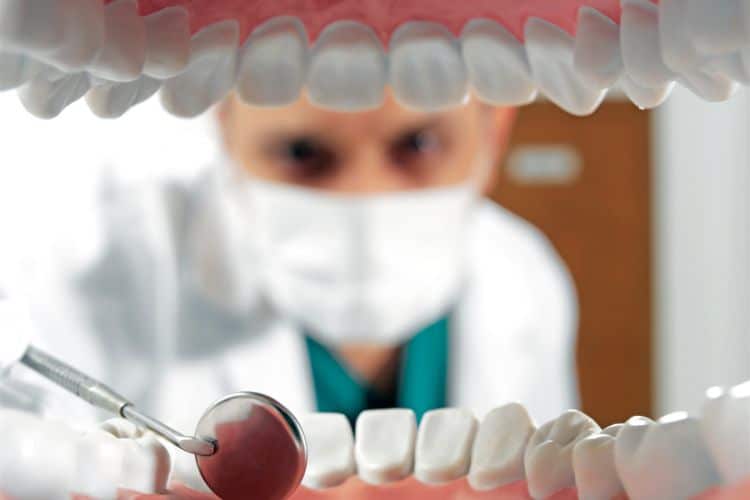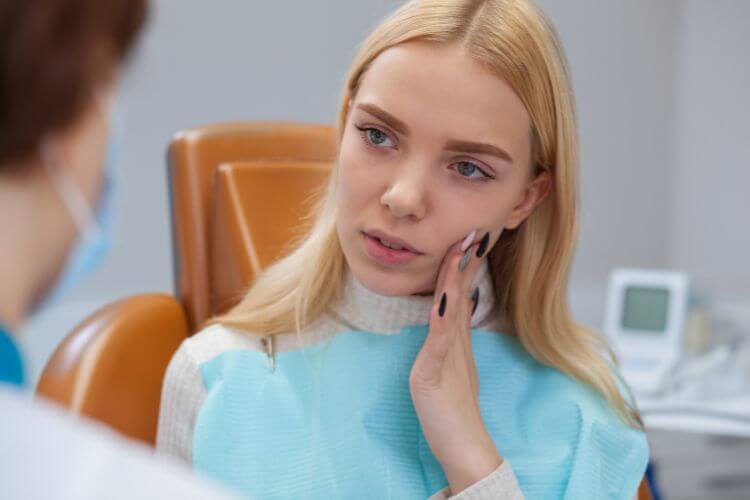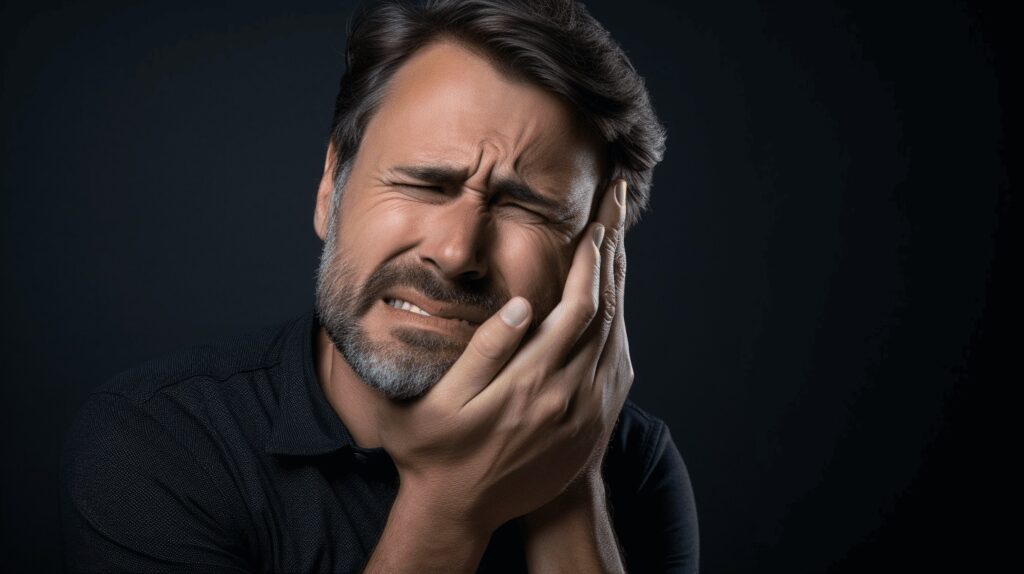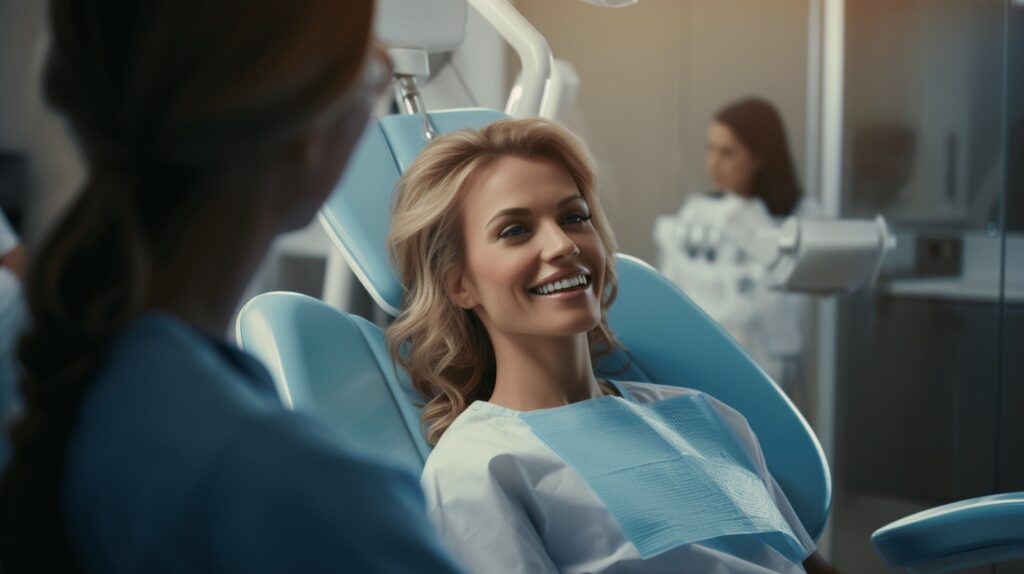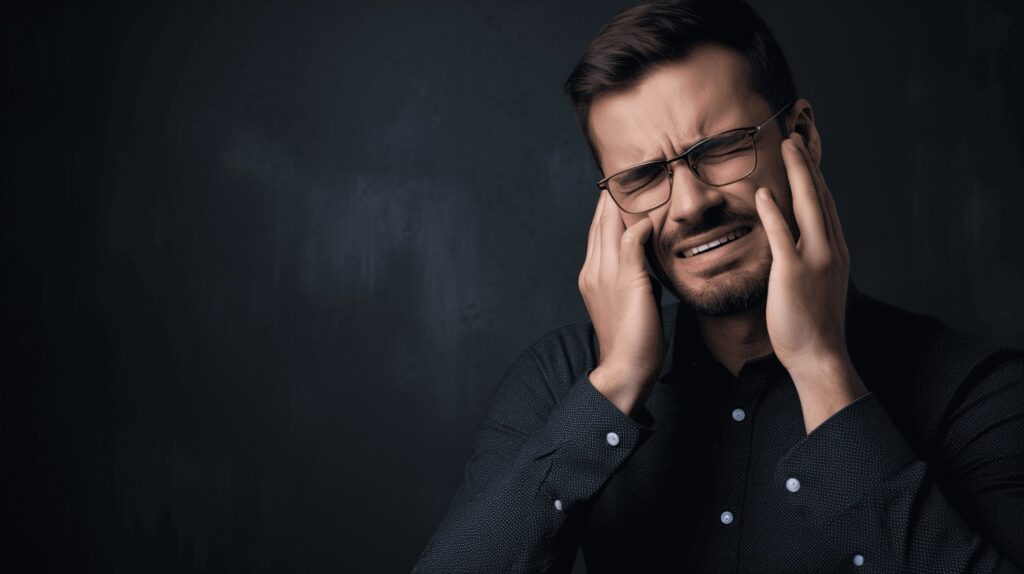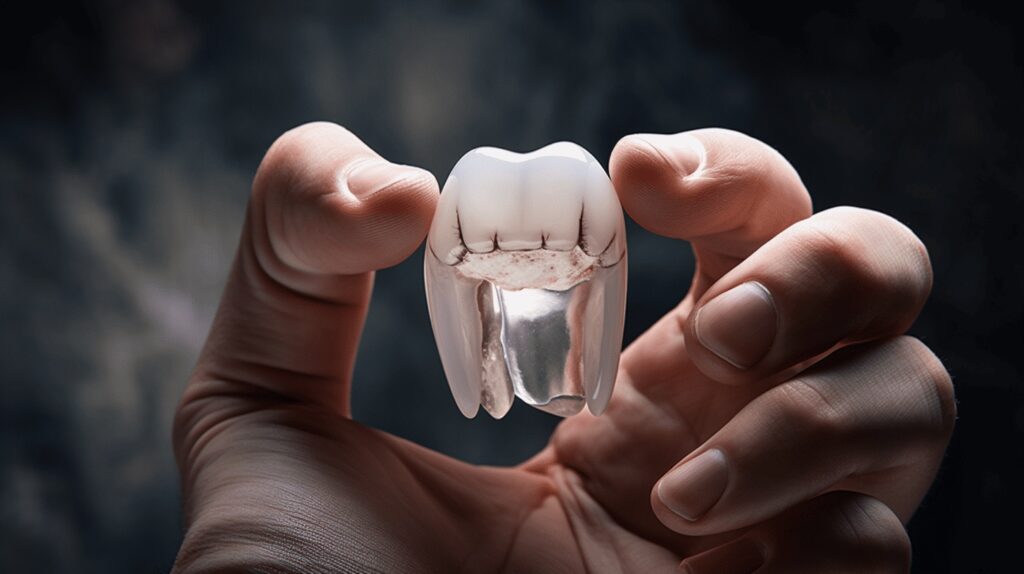Few life situations prompt immediate fear and anxiety like the onset of a sudden dental emergency. Whether you have chipped a tooth playing sports or woke up to throbbing pain in your jaw, these unforeseen dental woes not only cause discomfort but also disrupt our daily routines and can cause substantial financial strain dealing with dental emergency. 😱
As we delve into this comprehensive yet captivating discussion, we\’ll explore how prevalent such dental emergencies are. We aspire to shed light on the amount of productivity lost, the number of school hours missed, and how these emergencies impact our economy. Along with highlighting the unsettling trends in dental health, our aim is to equip you with knowledge about preventive measures, and how being well-prepared can meticulously manage such unexpected situations.
We\’ll also touch on the role of innovation, exploring how technologies like Virtual Reality are revolutionizing the way we prepare for dental emergencies. As we journey through this topic, our goal is to not only inform, but to help you smile confidently, knowing you can fashionably face any unforeseen dental issue that life throws your way. 😁👌
Table of Contents
Prevalence of Dental Emergencies
Dental emergencies are more common than one may expect. In fact, these occurrences have surged in recent years, substantially impacting not only our overall health but also our day-to-day activities and responsibilities.
Dental Related ED Visits
When we speak of dental emergencies, we’re not talking about mild cases of toothache that can be soothed by a warm saline rinse. We’re referring to severe cases that demand immediate professional help. It’s astonishing to note that in 2018, the United States saw over 2 million dental-related visits in emergency departments (ED). This escalating figure is a wake-up call to us all about the importance and urgent need for effective preventative dental care. However, when such unfortunate situations do arise, quick dental emergency solutions can be helpful.
Impact on School Hours
The impact of these emergencies extends far beyond the confines of the hospital. In schools, for instance, approximately 34 million academic hours are lost each year due to emergency dental care. That’s time that could have been spent nurturing the minds of our children towards a brighter future but is instead spent in consultations, treatments, and recovery from unfortunately preventable situations.
Imagine. A proactive approach to dental health could save millions of hours of education and alleviate the ineffable pain of countless individuals. The only question is, will we take the initiative?
Understandably, many of us are apprehensive when it comes to dental emergencies. They’re unexpected, daunting, and can be incredibly painful. However, there’s really no need for fear when you’re armed with the right information and quick dental emergency solutions. A little knowledge can quell anxiety and empower individuals to handle these situations with confidence.
Investing in preventive dental care today is more than just caring for our teeth. It’s about creating a more proactive society that values health, education, and the cultivation of bright futures. So let’s pledge to shake off complacency and take a more proactive approach to dental health. Through preventive dental care and awareness, we can make dental emergencies a rare event instead of an escalating concern.
Cost of Emergency Dental Care
Unexpected trips to the dentist can not only be stressful and often painful, they can also be a significant strain on your bank account. But have you ever considered the broader financial implications of emergency dental care? Let’s delve into the matter.
Impact on Productivity
Did you know that unplanned dental care amounts to a staggering $45 billion dent in the US’s annual productivity? When pain, discomfort, or dental injuries occur, individuals often have to take unexpected time off work to attend to their emergencies. This leads to a decrease in performance and productivity both for the individual and, on a larger scale, for businesses.
Here’s how it works:
- People suffering from dental issues aren’t the most focused or energetic workers. They might be dealing with discomfort and pain, which reduces their overall productivity.
- It’s not just the day of the appointment that counts. Consider recovery time, follow-up visits, and any further treatment necessary to resolve the dental emergency.
- Businesses may struggle to cover the absent employee\’s workload, leading to potential delays in delivery and decreased overall productivity.
Atraumatic Dental Pain
Atraumatic dental pain, which refers to discomfort not caused by injury or trauma, costs upwards of $2.4 billion annually for emergency department (ED) visits. This staggering amount signifies the strain on our medical facilities and stresses the need for timely preventive dental care.
Imagine if these funds were invested in promoting preventative measures and awareness about dental health? It’s a thought that highlights the importance of regular dental check-ups and maintenance.
One must keep in mind that preventive dental care is always less painful and cost-effective than dealing with an emergency situation. We often forget to prioritize our oral health until a dental emergency throws us off track. Addressing Dental Emergencies in a prompt manner becomes imperative to avoid the snowballing costs, both personally and socially.
Emergency dental care costs may be inevitable for unexpected accidents, but for the majority of oral health issues, it’s vital to remember that prevention is always better – and cheaper – than the cure. These figures offer a timely reminder to look after our dental health, not just for our individual welfare, but for the sake of our productivity and national healthcare economy. Investing in regularly scheduled dental check-ups can go a long way in alleviating these staggering costs.
Dental Health Trends
Just when you thought we couldn’t possibly talk more about teeth, we’re back—with more insightful dental health trends. 😁 Did you know that nearly every adult worldwide has experienced dental caries at some point in their lives?
Mind-blowing, isn’t it? But, while it’s fascinating reading these stats, it’s essential to understand how prevalent these issues are. So why not deep dive into what’s happening and how we can counter these trends to keep our chompers healthy?
Prevalence of Dental Caries
Dental caries, fancy speak for tooth decay, is an all-too-common condition affecting nearly 100% of adults worldwide to some degree. It’s an issue we’re all too familiar with. Those annoying cavities we often get from feasting on too many sugary foods sound familiar now, right? 🍬
However, dental caries isn’t a problem exclusive to adults. Many children experience this condition; it’s reported that 13.2% of kids aged between 5 to 19 have untreated dental caries.
Prevalence of Tooth Decay in Adults and Children
Sounds like a gloomy picture, doesn’t it? But don’t worry, it’s not all dark clouds. On the bright side, we can reduce tooth decay with effective preventive measures.
Guess what? In America, as much as 26% of adults have untreated tooth decay. While this may seem like a daunting statistic, understanding the prevalence of tooth decay allows us to take focused steps to improve our oral health.
Rather than agonize over these numbers, let\’s be proactive and learn how to prevent tooth decay before it poses significant issues. Check out some valuable advice on Preventing Tooth Decay Tips.
Without doubt, comprehensive care and prevention can truly transform these trends. So let’s continue to spotlight dental health, elevating the importance of standard clean-ups and good dental hygiene habits to ensure our smiles stay bright and healthy! 😊
So, next time you reach for that sweet treat, remember that a few moments of sugary delight could potentially lead to hours in the dentist’s chair. Let’s choose our battles wisely. 😉
After all, who wouldn’t want to maintain a healthy, sparkling smile?
Preventive Measures Against Dental Emergencies
Dental emergencies can be a terrifying ordeal, whether it’s a painful toothache in the middle of dinner or a sudden accident that leaves one’s mouth bloody and sore. The good news is that a lot of these mishaps are preventable or at least can be significantly reduced. From maintaining regular oral cleaning rituals to routine check-ups with your dentist, there is a plethora of ways to guard against unexpected dental problems. We want to share with you three central pillars of prevention that can help keep your oral health on track:
Proper Oral Hygiene
Firstly, we cannot stress enough the importance of spick and span oral hygiene for avoiding unnecessary dental emergencies. Neglected bacteria can lead to cavities, gum disease, or worse, infections that result in severe toothaches and potential loss:
- Brush your teeth twice a day using fluoride toothpaste and make sure you reach all corners and surfaces.
- Floss regularly to remove any food residue stuck between your teeth – these hiding spots are often fertile breeding ground for harmful bacteria.
- Rinse with an effective mouthwash to keep your breath fresh and kill any lingering harmful bacteria.
By putting a little extra time into cleaning, polishing, and rinsing your mouth, you are building a strong first line of defense against any major dental grievances! Remember, the Role of Preventative Dentistry revolves heavily around basic hygiene practices.
Routine Dental Visits
Don’t play down the importance of routine dental visits, folks! Yes, it may not seem that appealing to lay down on that reclining chair while your dentist scrutinizes your teeth, but it’s a vital part of preventive care.
- Regular check-ups help your dentist detect any small issue before it becomes big, painful, and expensive.
- Professional cleaning during these visits helps keep plaque and tartar at bay, which may cause decay and gum problems.
- Your dentist will also examine your gums, tongue, and neck for any signs of issues like cancer, making it a key preventive health measure.
Mouthguards
Last but not least, for sports enthusiasts or anyone involved in high-impact activities, mouthguards have become a game-changer. 🏈
- Wearing a mouthguard during these activities protect your teeth, lips, and tongue from injury.
- These protectors can prevent chipped or broken teeth and save you from the painful experience of knocked-out pieces.
Needless to say, preventing a dental emergency requires a commitment to upkeep one’s oral hygiene, routine visits to your favorite dentist, and using mouthguards when needed. The reward, however, is a dazzling smile that speaks of good health and the peace of mind of not dealing with painful, abrupt dental issues. 👍
Remember, the actions you take now significantly impact your future oral health. So, keep that toothbrush ready and see your dentist regularly. And, don’t forget the important Role of Preventative Dentistry in maintaining a happy and healthy mouth.
Emergency Preparedness in Dental Practice
Emergency scenarios in a dental practice are a rare occurrence. Yet, it’s highly critical to be fully prepared for these situations. In life, unforeseen events come knocking without prior appointments. In the world of dentistry, “prior appointments” aren’t just for patients, they apply to potential emergency situations as well.
From sudden allergies to medical complications, a dental practice can quickly transform into an emergency room. The stakes are always high. Therefore, being prepared to tackle an emergency is not just about reacting swiftly but also about understanding the importance of continued training and adhering to an established emergency responding protocol.
Importance of Continued Training
Training for emergency situations isn’t a one-time affair.👨🎓 It’s a continuous process. Think about training as a well-oiled machine. Just how a machine needs oiling and maintenance for smooth functioning, regular training ensures that our medical skills do not rust, that our ability to handle emergencies remains sharp and efficient.🔪
- Updated training programs: These refresher courses provide us with the most recent medical advancements, and their potential role in medical emergencies.
- Practice makes one perfect: Sound cliché? Well, clichés exist for a reason! The adage holds true in this case – the more we practice our emergency handling routines, the better we get at them.🏋️
- Increased confidence: With regular training, we grow more confident in our abilities to handle emergencies, which ultimately ensures better patient care in any given circumstance. 🙌
Emergency Responding Protocol
An emergency response protocol is like a roadmap to safety when faced with a sudden crisis. It maps out the exact steps we need to take the moment a situation spirals into an emergency. This written protocol is absolutely essential in a dental practice because:
- Ensuring immediate action: It helps us spring into action without wasting critical moments.
- Standard procedure: It establishes a standard sequence of actions to be followed, minimizing room for errors or panic-induced mistakes.
- Improved patient trust: Having a clear emergency response protocol in place enhances not only our efficiency but also strengthens the patient’s trust in us. After all, everyone values a team that is well-equipped to handle crises. 🚑💪
So, whether it’s about brushing up our skills through continuous training or adhering diligently to an emergency responding protocol, the importance of being prepared for emergencies in dental practice simply cannot be understated. After all, in health care, we aren’t just dealing with teeth, are we? We are dealing with lives, and every life matters. 🦷❤️🩹
Innovative Solutions – Dealing With Dental Emergency
There are numerous innovative solutions making their way into various industries, revolutionizing how we approach complex challenges. These technological advancements are shifting paradigms and paving the way for a future that dares to dream beyond the confines of the traditional. Amidst these fantastic advancements, one specific technology that merits our particular attention is Virtual Reality (VR). This stunning piece of tech is introducing fresh approaches into domains like training and development, creating more immersive and realistic experiences than ever before.
Virtual Reality Training- Dealing With Dental Emergency
Put on the VR headset, hold those interactive controllers, and you instantly warp into a different world. From surreal escapades into utopian landscapes to hyper-realistic recreations of your office space, VR can simulate almost anything. For us, the thrilling part is how this technological wonder takes us a step closer to experiencing scenarios that are otherwise hazardous, costly, or logistically challenging in real life.
Take Japan’s emergency preparedness strategy as an instance. Japan, being nestled in the heart of the bustling ‘Ring of Fire’, frequently faces natural disasters such as earthquakes and tsunamis. The country is now leveraging VR technology to help prepare its citizens for such emergencies with unprecedented efficacy.
Dealing With Dental Emergency
This solution comes in the form of simulation training. Through virtual reality, the people are exposed to scenarios rendered to mimic real-life disasters, offering them combined elements of viscerality and safety. By navigating through these virtual disasters, they learn vital skills to better manage emergencies. Here’s what the simulation training using virtual reality technology generally features:
- The virtual enactment of emergencies, incorporating the unpredictable and often harsh realities of disasters.
- Interaction with the virtual environment, learning practical skills like locating safe exits, using emergency equipment, and recognizing danger signs dealing with dental emergency.
- Learning emotional management techniques. Virtual reality’s immersion can elicit real emotions, providing a layer of emotional preparedness to the training.
“The measure of intelligence is the ability to change,” said Albert Einstein. For us, this statement concisely encapsulates this epoch of innovation we find ourselves in. As we continue to embrace cutting-edge technology like Virtual reality, we are not merely adopting changes; we are tailoring the future. The potential these innovations hold is exhilarating and pushes us to continue exploring and adopting new solutions. After all, who wouldn’t want to harvest the benefits of creating safer, more prepared societies using technology like VR?
Conclusion – Dealing With Dental Emergency
When it comes to maintaining our dental health, preparedness is key. Toothaches or dental emergencies often strike at the most inconvenient times. But with several strategies and habits in place, we can significantly diminish the prevalence of such situations.
At Wilshire Smile Studio, we believe that everyone deserves the best dental care regardless of their circumstances. From providing top-notch emergency dental care to sharing insightful preventive measures, we’re more than a dental practice; we’re a partner in your oral health journey.
Learn more about our services and join us in the quest for healthier, happier smiles. Remember, a healthy mouth is the start of a healthy life. So let’s strive to make dental emergencies a thing of the past. And always keep that beautiful smile shining. 😊
So, let’s keep our dental health in check, prepare for any eventualities, and remember that we’re here when you need us. Trust Wilshire Smile Studio, your friend in emergency dental care and overall oral health dealing with dental emergency.
Book your free consultation with us online or call (323) DENTIST (323-336-8478) today.
Frequently Asked Questions – Dealing With Dental Emergency
1. What are some common dental emergencies?
Some common dental emergencies include toothaches, knocked-out teeth, cracked or chipped teeth, broken dental fillings, and abscessed teeth.
2. What should I do if I experience a toothache?
If you experience a toothache, rinse your mouth with warm saltwater, floss to remove any food particles, and apply a cold compress to reduce swelling. It\’s important to visit a dentist as soon as possible to determine the cause of the toothache and receive appropriate treatment dealing with dental emergency.
3. What should I do if my tooth gets knocked out?
If your tooth gets knocked out, handle it by the crown (top part) and rinse it gently with water. Try to place the tooth back into its socket without touching the root. If you can\’t reinsert it, keep it moist by placing it in saliva or milk, and seek immediate dental attention.
4. How can I deal with a cracked or chipped tooth?
If you have a cracked or chipped tooth, rinse your mouth with warm water and apply a cold compress to reduce swelling. Avoid biting down on the affected tooth and visit a dentist as soon as possible for evaluation and treatment.
5. What should I do if my dental filling breaks or comes out?
If your dental filling breaks or comes out, try to save the filling if possible. Rinse your mouth with warm saltwater to clean the area and cover the exposed tooth with temporary dental cement or dental wax. Schedule an appointment with your dentist to have the filling replaced.


